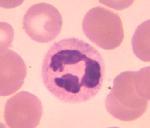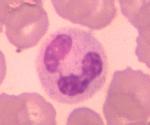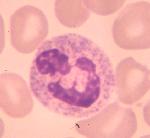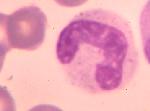
| Neutrophilic band in normal peripheral blood

|
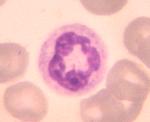
| It is called band neutrophil because of its nonsegmented, long and
narrow nucleus. The band-like nucleus can take any shape. The band
neutrophil is called Stab in Hungary and in German
medical texts. The word Stab means stick, which is somewhat
misleading, because although the nucleus is long and narrow,
but it is never straight.
|
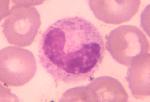
| Early band form. (It may also be considered a juvenile-band transition).
|
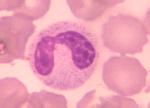
| A band neutrophil with a nucleus that show the first signs
of segmentation. (You may call this a band-segment transition.)
There is no full agreement among different hematological schools
about the difference between bands and segments. This explains
why different hematological books report rather different
percentage for bands in the WBC differential count. We call a
granulocyte segmented form if there is at least one place along the
nucleus where it is almost gets separated and is connected by a thin
filament only. (The filament may be very short though.)
|
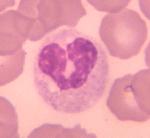
| The nucleus of a band cell is long and narrow. The width of the
nucleus can vary a bit, like here.
|
